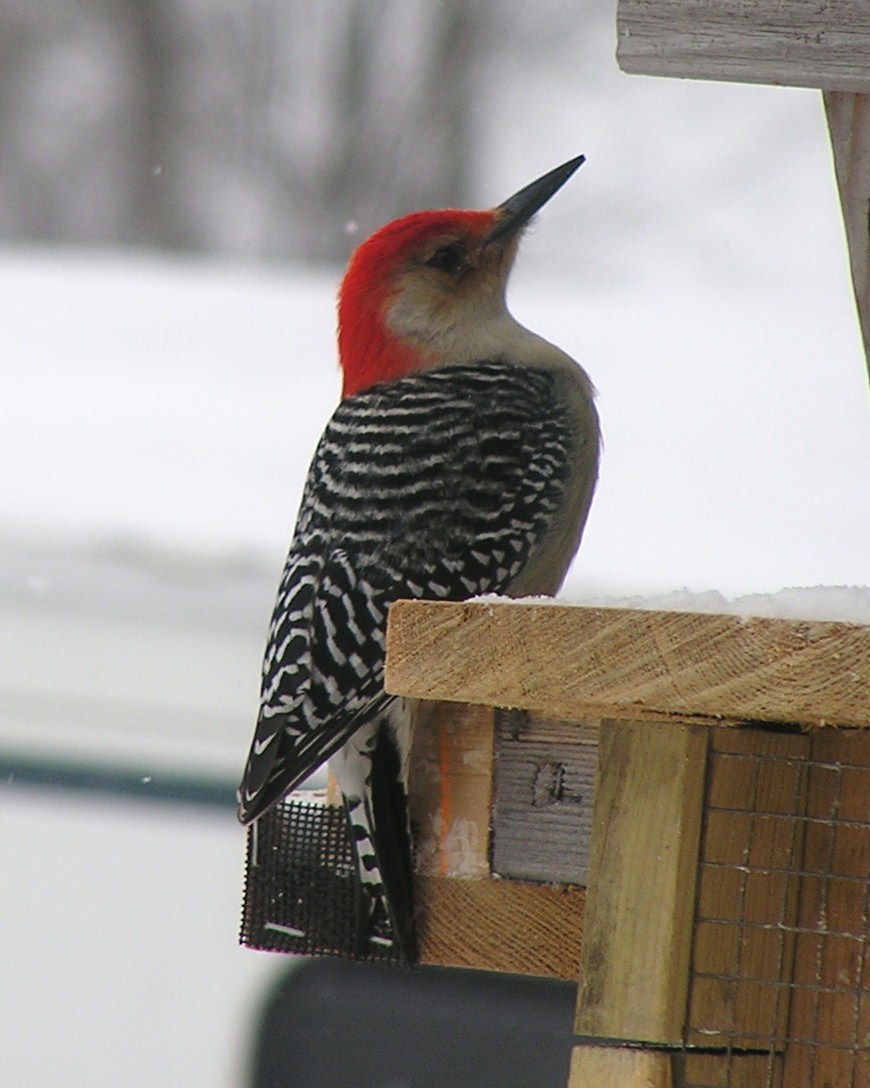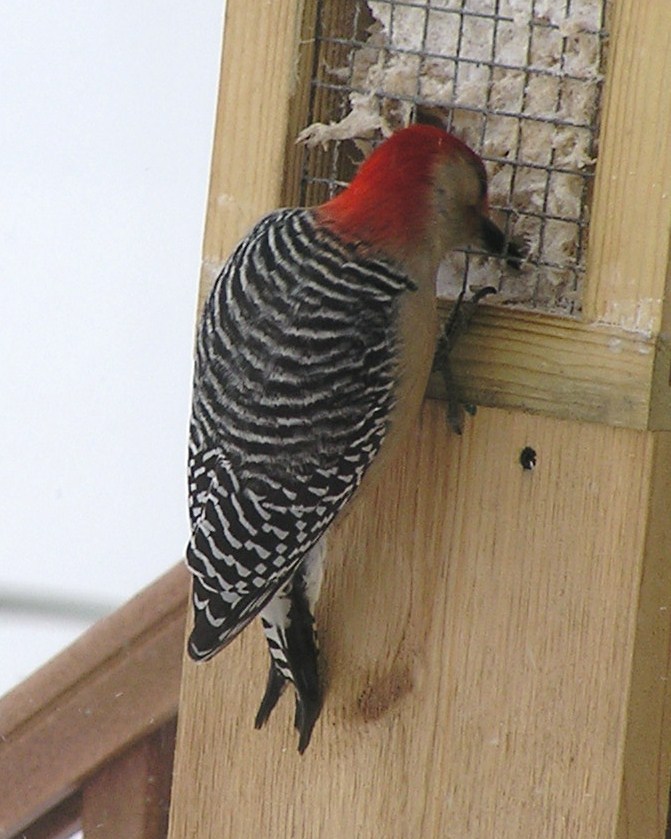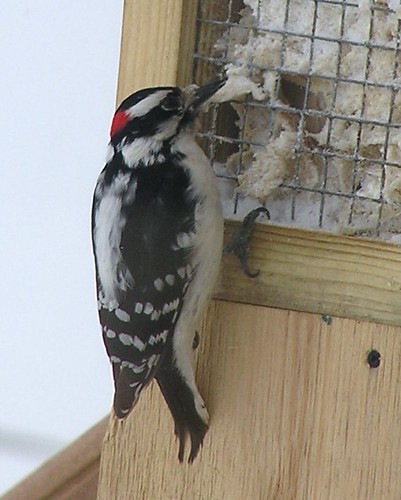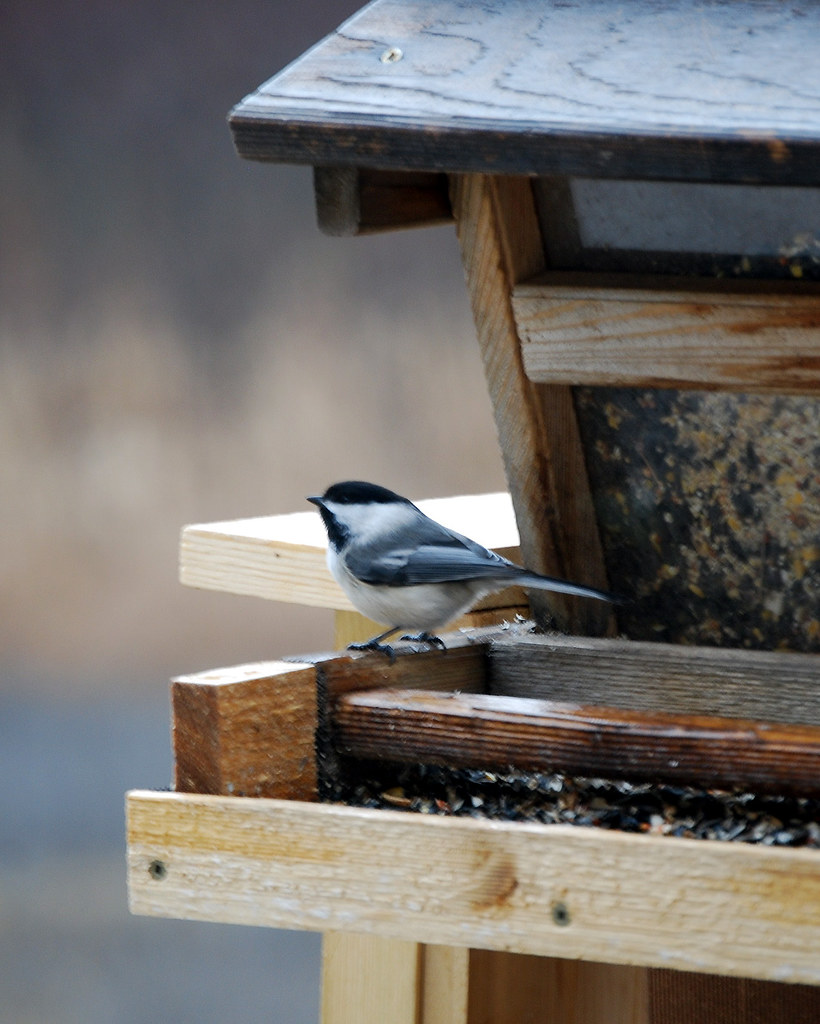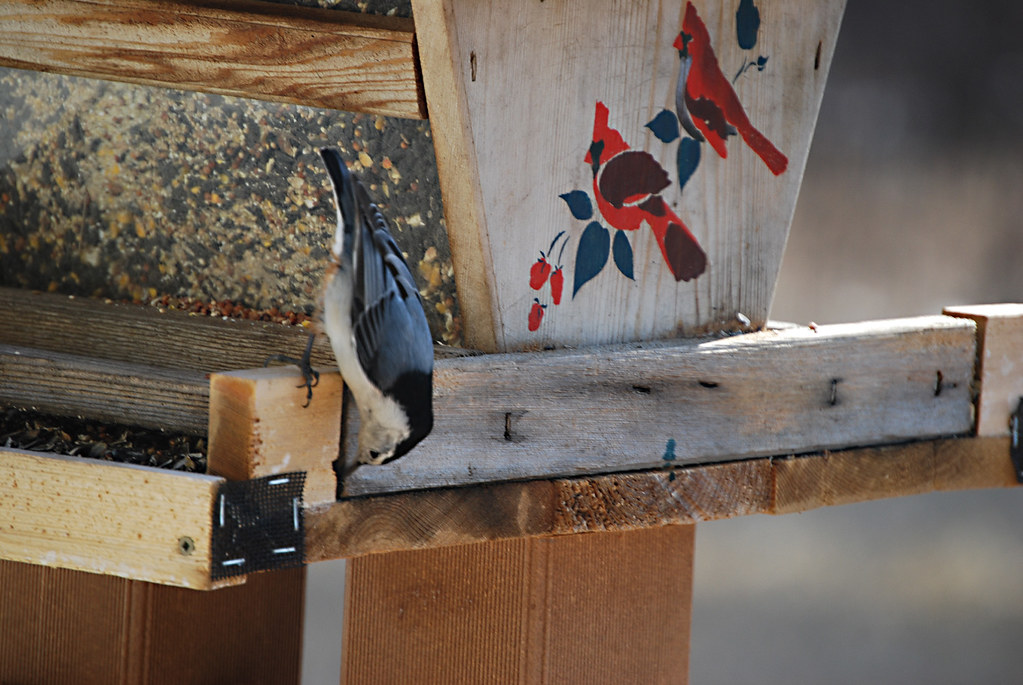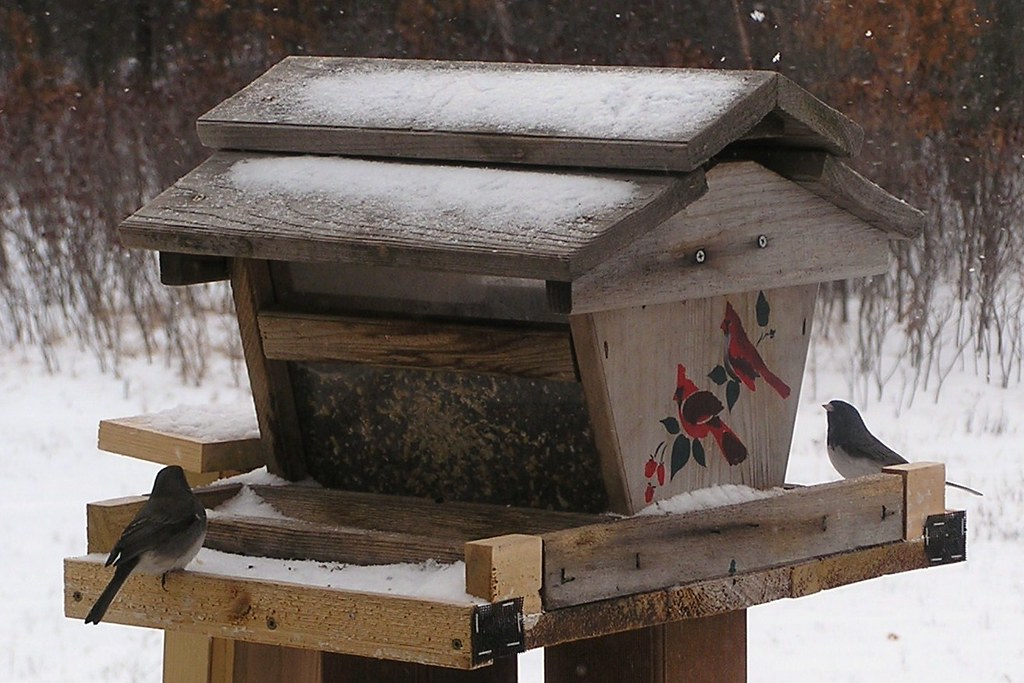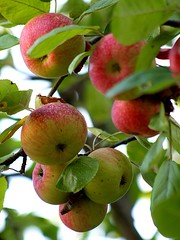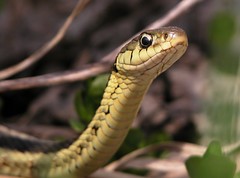Experiencing:
My grandmother, in whose kitchen I seem to have spent half of my young life, had a large spreading double flowered Japanese cherry growing in the yard behind her kitchen. In the spring the tree was a mass of large, drooping light pink flowers, as solid as an umbrella. It engulfed me in a happy feeling of peacefulness just to stand under it and look up into the solid pink canopy. I have never known another tree of any kind to flower so copiously. Hanging from the center of the canopy of flowers was a bird feeder which "Gram" kept full all year long. But in the spring that tree was an unforgettably beautiful backdrop for the visiting birds. Picking up on "Gram's" interest in birds I soon became familiar with all the common birds in the neighborhood. I would stand at her kitchen window mesmerized by the comings and goings and the intermittent squabbles of her feathered visitors.
Then in fourth grade Joe Barefoot launched me on a lifelong bird feeding venture of my own. Joe Barefoot (Mr. Barefoot in the classroom, Joe Barefoot to the town folk.) was a traveling media person in our small town. This was decades before the word "media" meant more than oils, pastels, etc., so I don't know what his title actually was. He traveled from classroom to classroom in our elementary schools with a movie projector and reels of film that served as magic gateways to the world beyond our limited horizon.This was in the years when television was no more than a novelty for early adopters, so when Mr. Barefoot came to our classroom one could sense the excitement. Nobody was about to take the slightest action that might annoy the teacher and cancel our show. I recall movies about Eskimo and African cultures, agriculture and the geographical wonders of the world. But the real thunderbolt Joe Barefoot threw at me came the day he carried in a mysterious brown paper bag along with his projector. He talked about feeding birds, then opened the bag and pulled out a round ball on a string. It was a suet ball packed with seeds. Next he tilted the bag toward us and showed us the bird feed within, a mixture of sunflower seeds and millet..
In the next breath he announced that he could get these items for us at lower prices than those in the store and that if we wanted to feed the birds he would take orders and make deliveries. I think the seed price was something like pennies a pound.
I rushed home that day and begged my mother to let me order some seed. Now my family didn't have much money and didn't buy anything that wasn't necessary, but on this occasion my mother agreed - provided I paid for half out of the little green money can on my closet shelf. I was elated.
I set about designing a bird feeder. From somewhere I got some one inch boards. My buddy Bruce got a saw, I got a hammer and nails. We cut boards and pounded together a bird feeder in his garage. By the time the seeds were paid for and delivered my feeder was painted brown with floor paint and hanging in the little jack pine along our back walkway, right over my little wildflower garden. I can still see it in my minds eye. It was a terrific feeder that lasted for years. Reflecting back I still wonder where I got the know-how to design and build it.
Soon I had the cardinals, bluejays, juncos, titmice and other local characters coming out of nowhere to hang out at my feeder. My mother relented and started buying the feed, and I was launched on a lifelong habit. I have been hanging bird feeder ever since. During the years that my wife Mary and I were RVing full time I designed a clear plastic feeder to hang on the ladder on the back of our trailer, right up against the one way window. Over the years we saw dozens of bird species a nose length away, birds that were never seen around my original Pennsylvania home. I owe the long departed Joe Barefoot a big thank you.
Now that I'm living in east central Minnesota the number of winter bird species at my feeder is limited. But here is the main cast of characters that show up at the feeder just outside the kitchen patio door.
The Red-Bellied Woodpecker
The red-bellied woodpecker is my favorite winter bird. I don't know why. I just love the sharp color pattern and the exaggerated woodpeckery behavior of this bird. It seems to broadcast an attitude of being in charge of its world. The picture directly above clearly illustrates how a woodpecker uses its tail for a prop.
The Hairy Woodpecker
The hairy woodpecker and the similar looking downy woodpecker spend a lot of time at the feeder.
A Visiting Chickadee
The White Breasted Nuthatch
The white breasted nut hatch as well as the chickadees provide endless entertainment as they hold a sunflower seed under one foot and peck it open- a crafty maneuver. The nuthatch is not as accommodating as the chickadee and will often drive other birds away until it decides to leave.
Dark Eyed Juncos
Life wouldn't be the same in snow country without the dark-eyed juncos. These sparrows are one of our most numerous winter residents according to our annual Christmas Bird Count. In summer ours move north but they always return just before the winter snows.Knowing:
By observation I've learned that the term "pecking order" really means something in the woodpecker family. Pecking order is determined by species size and is, in decreasing rank: pileated, red-bellied, hairy, and downy. If a woodpecker is on the feeder and a higher ranking one shows up, it leaves almost immediately. It usually goes to a nearby perch and politely waits til the bigger guy takes off. On the other hand, if a higher ranking woodpecker is already on the feeder a new arrival will find a perching place to wait, or else leave the area. It's fun watching these birds pull rank on each other all day long. In the long run everyone gets fed.
Like many who feed the birds I've always had a warm feeling inside as I've thought about helping them survive. I recently learned that birds don't need to be fed in the winter. Nature has equipped them for survival even in our near arctic winters. But if you do feed them they'll repay you with hours of enjoyable watching.
